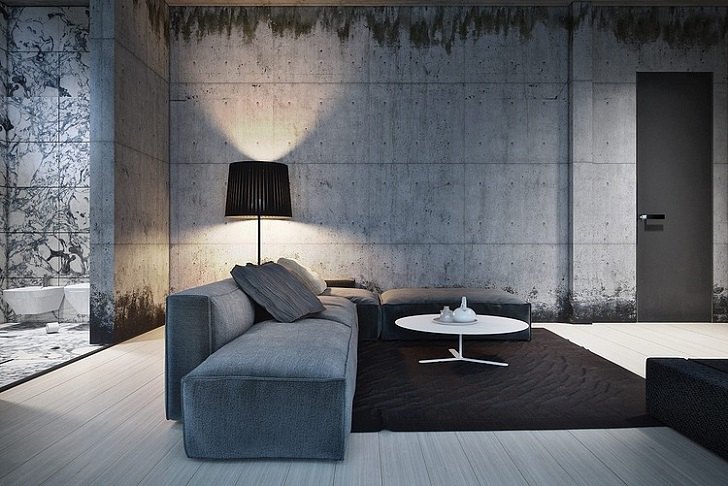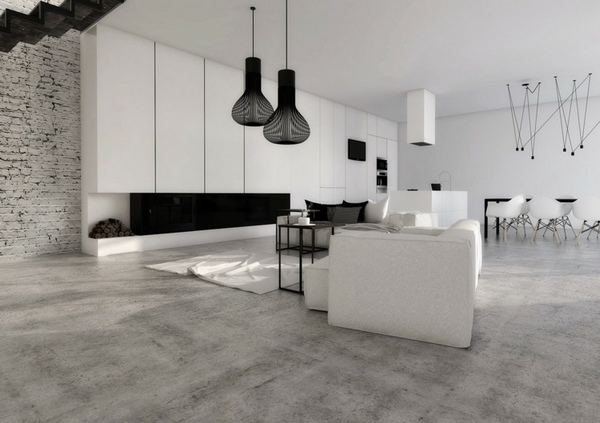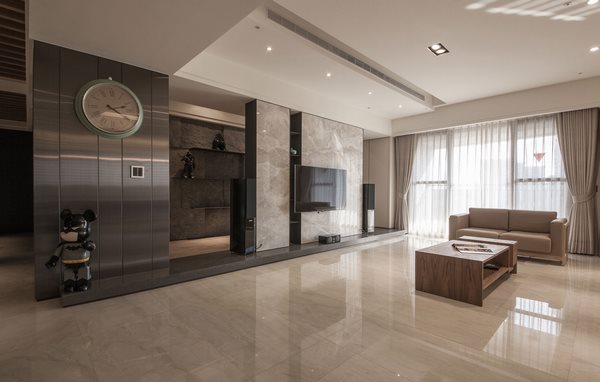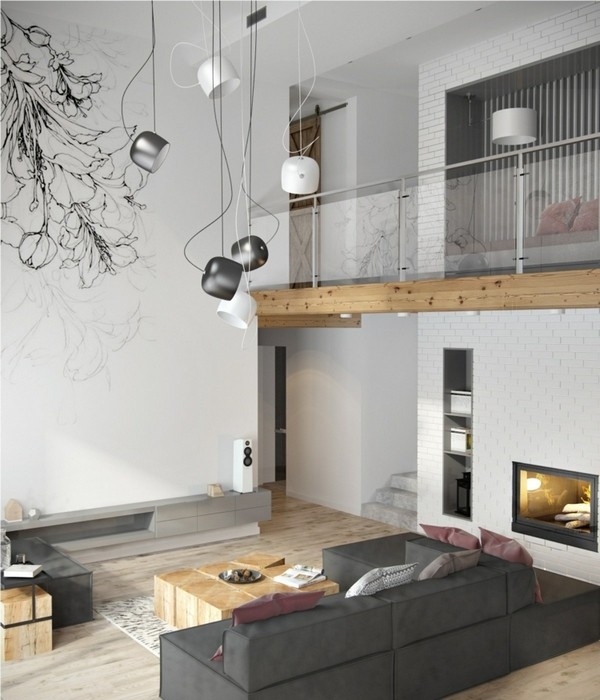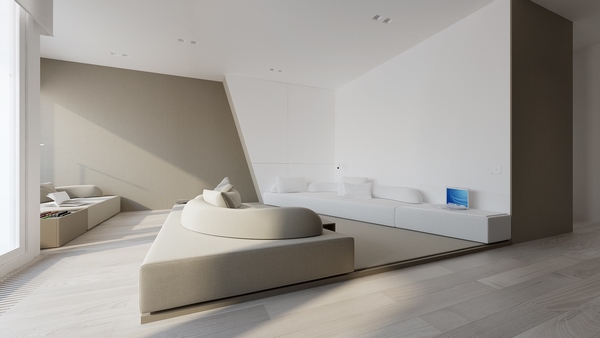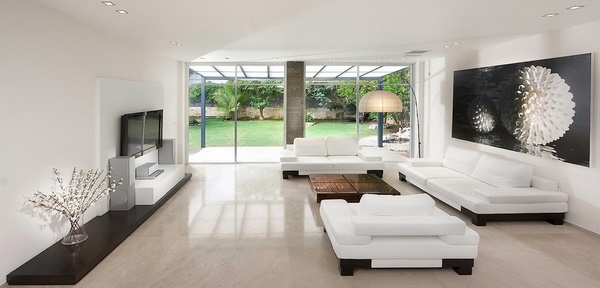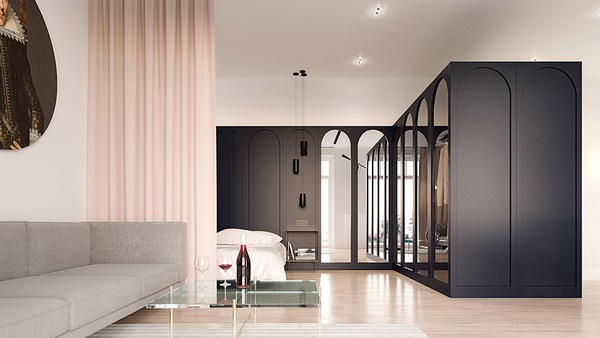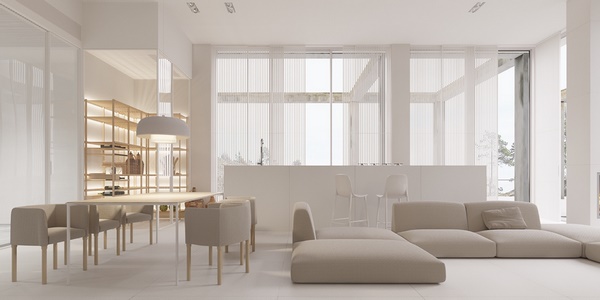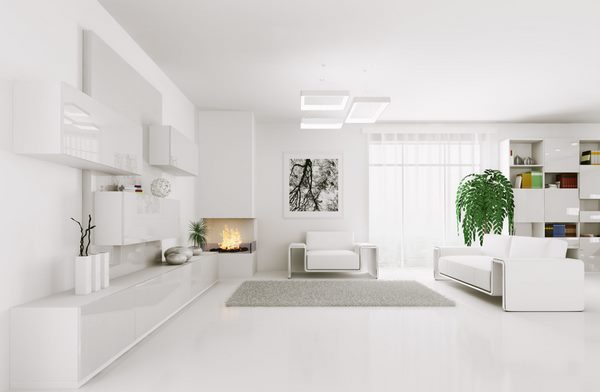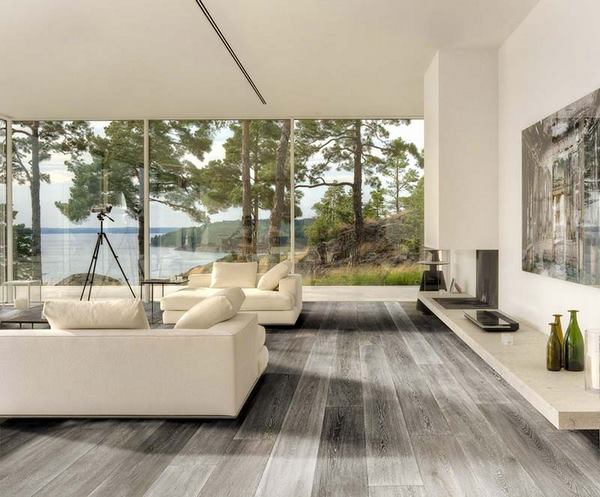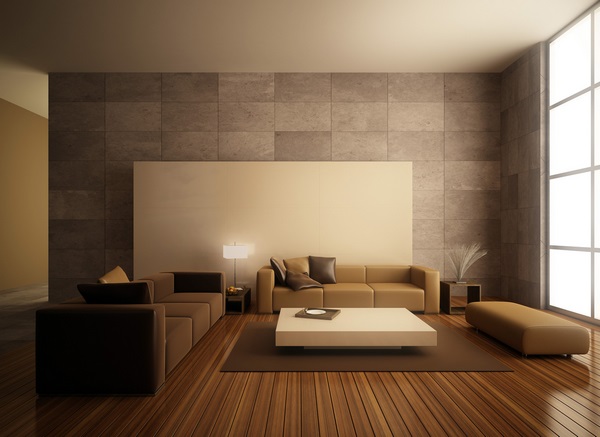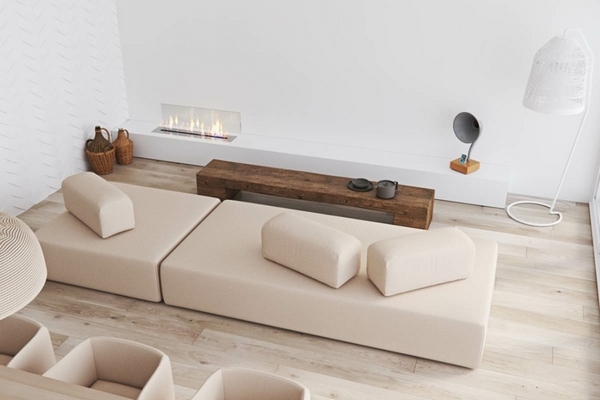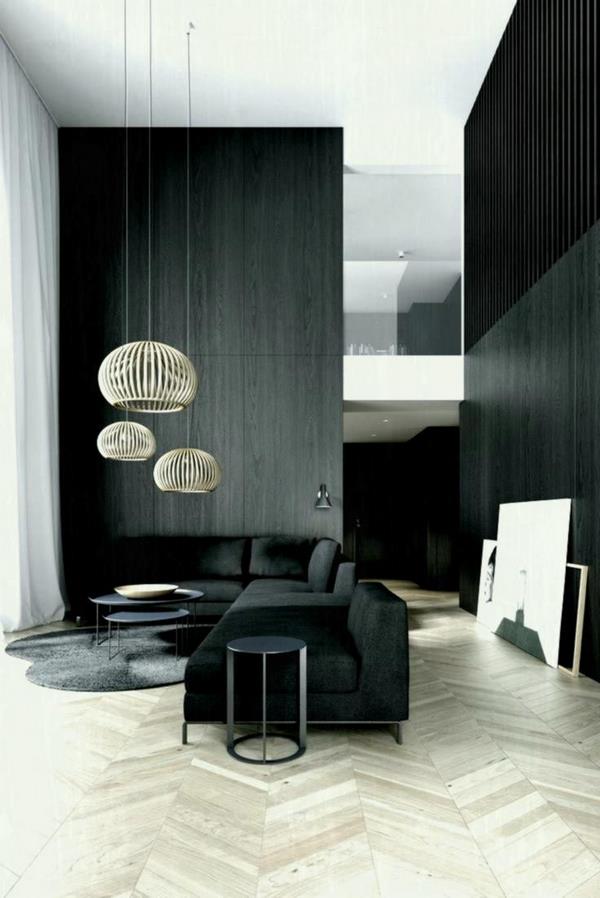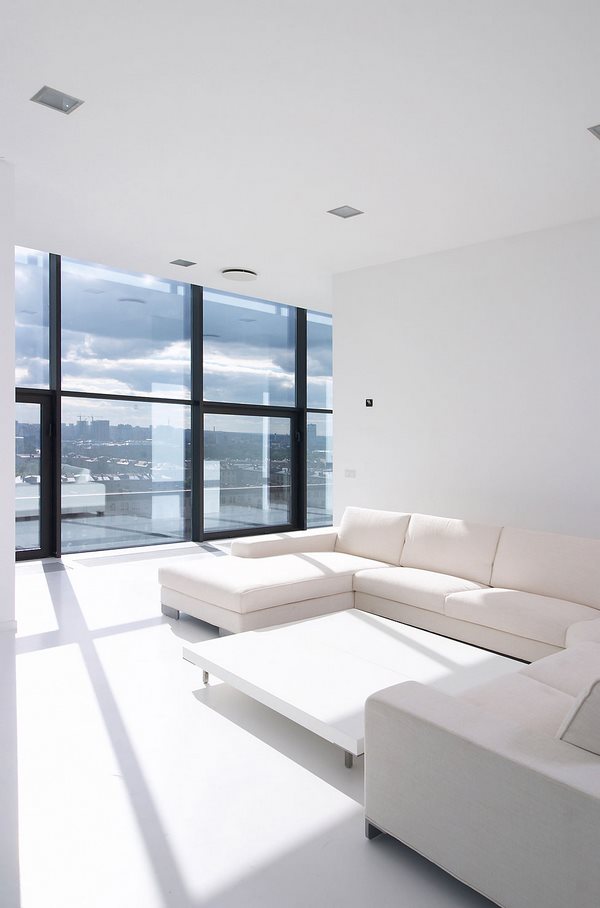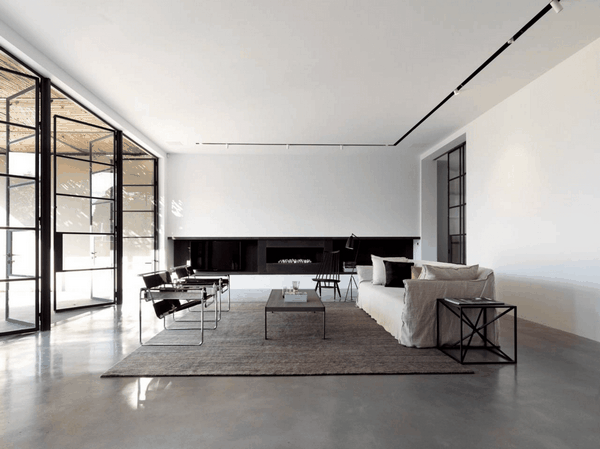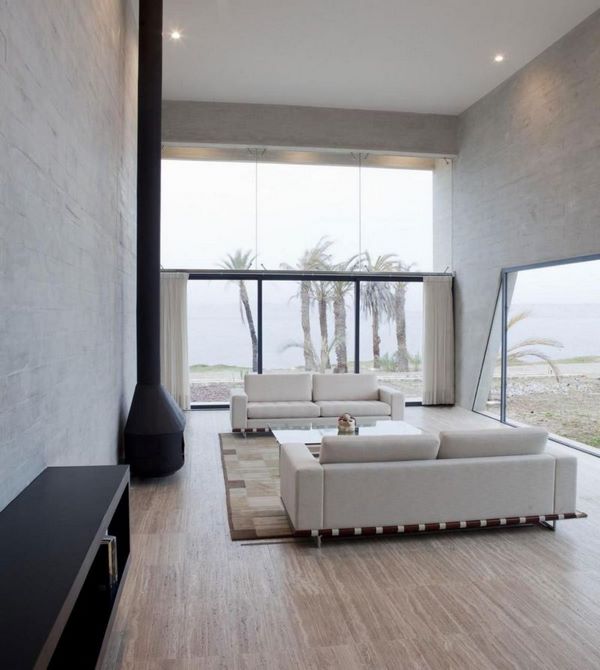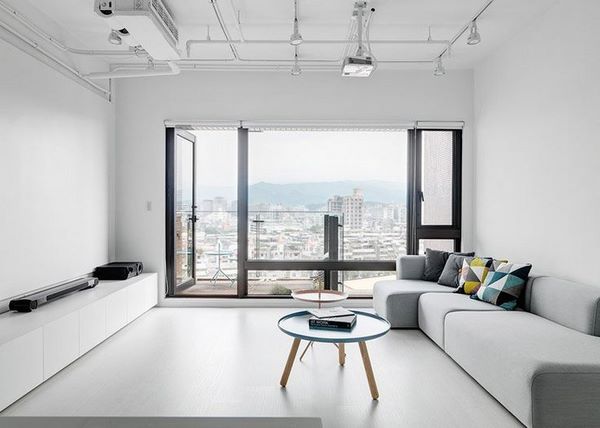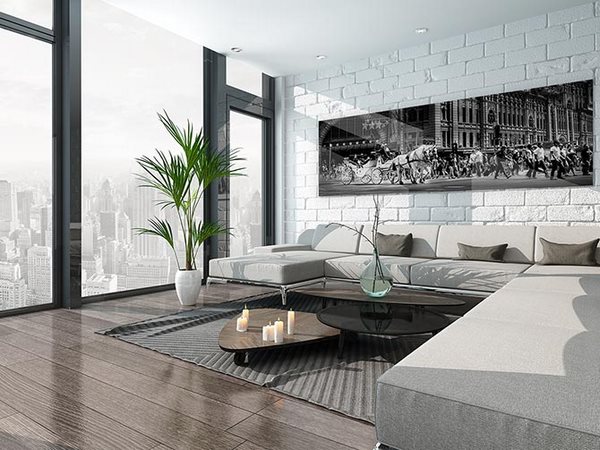Minimalist living room interiors are light and unobtrusive, stable and functional without unnecessary objects and every item in the room has its own place. Nowadays people who prefer the minimalist style when decorating their homes become more and more, and there are many reasons for this as the living room is intended not only to entertain friends but to accommodate the family members and their daily activities. As always, functionality influences design and minimalist interiors are not only fashionable and stylishly decorated, but also spacious and comfortable.
How did minimalism appear? Minimalism, as a trend, appeared in New York and gained popularity during the 60s of the last century. The concept of minimalism was first formulated by the German architect Ludwig Mies van der Rohe, who first developed the concept of a departure from pretentiousness to simplicity of forms. All his works are distinguished by strict geometric lines and absolute absence of any decor. However, the beauty of the buildings and interiors created by him lies precisely in the balance of proportions and the use of materials such as marble, onyx, bronze, chrome steel and natural wood. Like any other designer trend, minimalism has its varieties.
Japanese minimalism is the most popular version of this style ans is based on the philosophy and principles of this ancient culture. It is characterized with light partitions made of bamboo or paper screens, low Japanese furniture, lack of decor, natural colors like white, black, gray, beige or brown. Another important feature is the absence of accessories and objects – all things must be safely hidden in the closets – and simple but high-quality finishing materials – brick, wood, bamboo mats,etc.
Scandinavian minimalism features light, low, simple furniture made of natural wood, a wood burning fireplace and painted brickwork as wall decoration. To create a visual effect of large space light colors competent lighting. The complete absence of unnecessary decor is another typical feature of this style. Stone, natural wood, ceramic tiles, parquet and plaster are the main finishes and the color scheme is light with color accents added by decorative pillows and rugs in folklore style.
Hi-tech minimalism features a very discreet monochrome color scheme sing gray, black, white and sand colors, as well as metallic sheen. Only one bright accent is allowed – a modern red sofa or a poster on the wall. Wallpaper is unacceptable so most often walls are painted. Furniture is characterized by simple geometric shapes and maximum functionality. Special attention is paid to lighting.
Each of these minimalist style varieties has its own pluses and all of them have their supporters and fans.
Minimalist living room interiors and basic rules and principles of the decor
Many people think that designing minimalist living room interiors is an easy task as the clear lines and free space are deceiving. Professional designers are aware of the fact that it is more difficult to create a modern style interior than, for example, a Shabby chic, Provence or even rustic. We shall have a close look at the main characteristics and important details which will help you create a functional and aesthetically pleasing living room.
Materials, surfaces, wall color and texture
The basic color in the minimalist style is white, in addition to which gray, black, blue, red colors and their shades are used. Choosing light colors like white, creamy, beige or ashy shades and limited use of accents like brick, orange and yellow will create an airy atmosphere. All colors should be muted, as natural as possible. In most cases, two main colors are chosen for interior decoration and a third contrasting color is introduced with the help of accents. The newest trends in interior design have made some additions to minimalism – beige and coffee shades are actively used, as well as natural shades of brown.
Materials play an important role in creating an interior in the style of minimalism. Wood is widely used as well as stone, glass, polished concrete, steel, reflective surfaces. For the walls it is best to use wooden panels or a cork, plaster, brick and concrete. The only decoration of the walls in the living room is a modern flat-screen TV, a mirror in a strict frame, several photos of the same size or a huge painting.
The ceiling must be an ideal flat surface in white. As an option for huge spaces and for the purpose of zoning gypsum plaster structures with strict shapes or stretch ceilings can be used.
The best flooring options for minimalist living room interiors are natural wood, parquet or laminate in dark color and, optionally – polished concrete. A carpet or an area rug of high quality and made of natural materials will help you divide the area into functional zones.
Furniture ideas for minimalist living room interiors are based on simplicity and functionality. The main place in a minimalist living room is given to soft geometric furniture, for example a low rectangular sofa. Armchairs have an ascetic look and are often replaced by pouffs. Furniture pieces should have flat, smooth facades without painting, carving and other decor. Compact modular furniture with a minimum number of cabinets, shelves and other elements is a good choice. It must be remembered that the furniture in the living room will become the focal point of everyone’s attention. Therefore, choose contemporary items made of natural materials. High quality is a priority.
Lighting, decoration and accessories in minimalist living room interiors are just as important as materials, textures and colors. Lighting has to create a feeling of freedom, spaciousness and weightlessness, to create ease and openness so that light floods the room. Original lighting fixtures with geometric shapes are a great way to add a decorative element to the interior. Floor lamps and table lamps will provide the necessary amount of artificial light for the dark part of the day.
As far as accessories are concerned, they should be chosen with extra caution. Small symmetrically hung frames, bamboo, neat floor vases and small sculptures are acceptable. A large black-and-white photo, futurist paintings – these are suitable as wall decorations. Textiles are used at a minimum. It is important that there is a contrast between the details, for example, between the carpet and the floor, the cushions and the sofa. White furniture and walls will look very elegant against a dark background, a solid wood floor, for example.
Minimalist living room interiors – why choose this style?
When we talk about minimalist living room interiors, we need to understand why this style is popular among homeowners. On the first place, living rooms have changed their function over time. Once used as a cozy retreat, nowadays this is the place where people seek relaxation after a hard and busy day. Minimalism is universal and a living room of any size, both small and very spacious, can be decorated in this style even if you are not a professional designer and decorator. All you need to do is to follow the basic rules and principles. Here is a short summary of the main features of minimalist style in interior design:
- Solid, reliable, practical furniture and household appliances. Nothing excessive or useless, cluttering up the space without a specific goal or benefit;
- Geometric shapes and straight lines. Strict order, proportionality and clear lines are essential. The lack of decor is the main rule of style, so textured surfaces, drawings and ornate forms are out of the question;
- Zoning of space and defining functional areas can be done with the help of finishing materials, the use of monochrome partitions of glass or wood. Maximum expansion of space and atmosphere of freedom, spaciousness, a sense of flight and depth;
- Abundance of light – natural or artificial, panoramic glazing and floor to ceiling windows. Open plan concept is the ideal home plan for minimalist interiors. Window treatment – blinds, drapes, curtains – should be avoided;
- Color – Minimalism is characterized by several leading shades and a pair of those that will create mood, contrasting, but not irritating. With the development of the style, the traditional white palette is expanded and you can see amazing minimalist living room interiors in turquoise or beige, cream or white, ashy or sandy colors, and accents are created with the help of black, chocolate, pistachio or terracotta;
- Minimum accessories and decorative elements. Stay away of fur and a lot of textiles, shelves loaded with accessories.
When planning your minimalist interior, make sure that you observe proportions, remove unnecessary items and create an atmosphere of spaciousness. Use discreet colors and get rid of any clutter. Remember that lighting is important so be bold and experiment with natural and artificial light.

